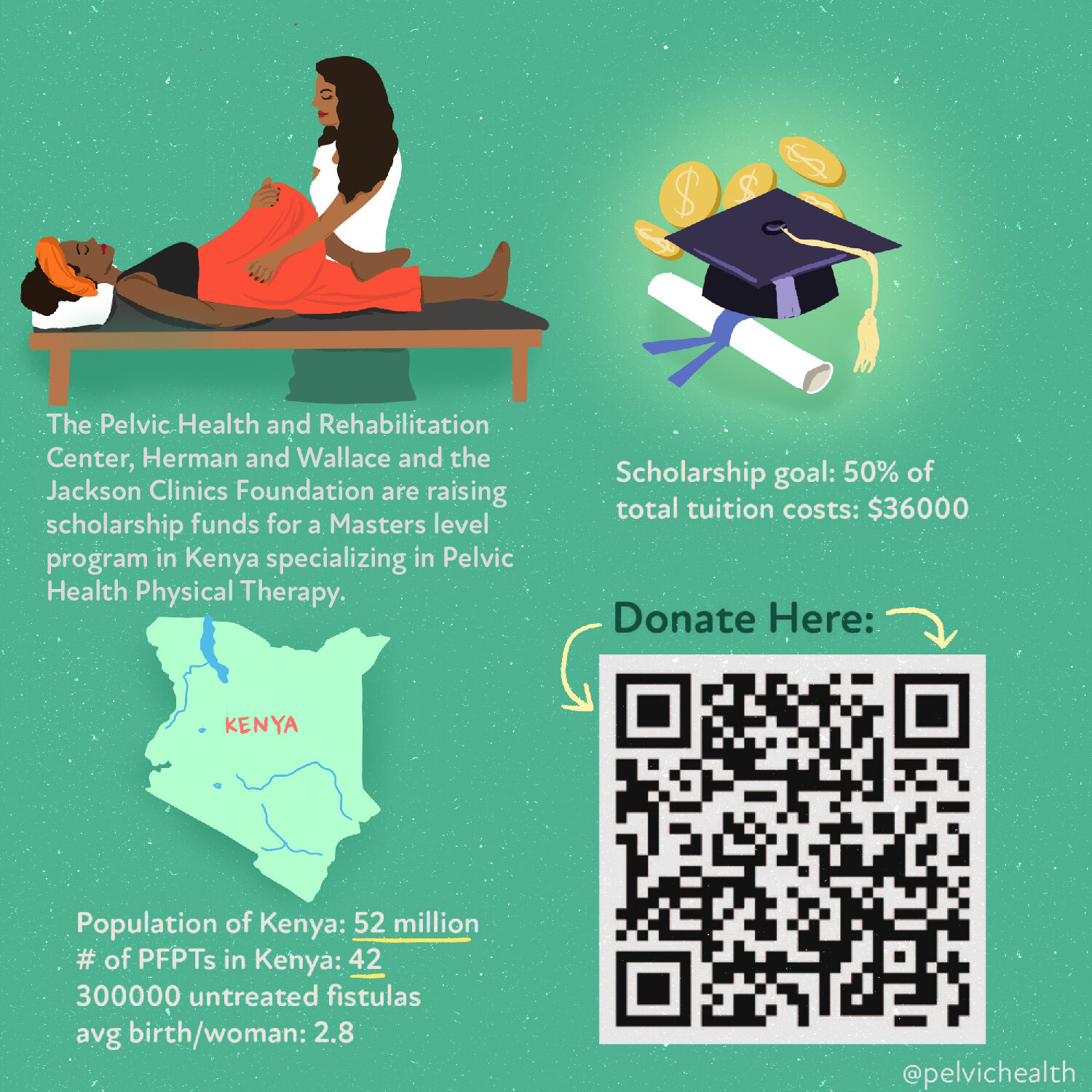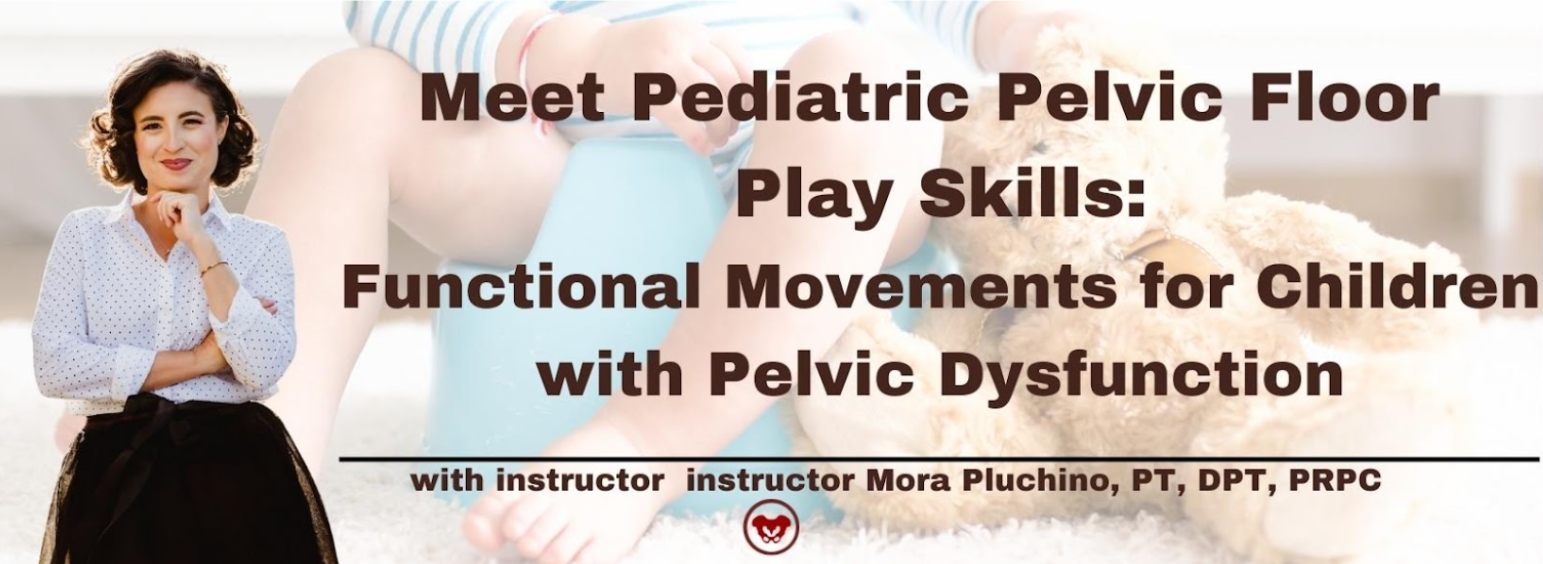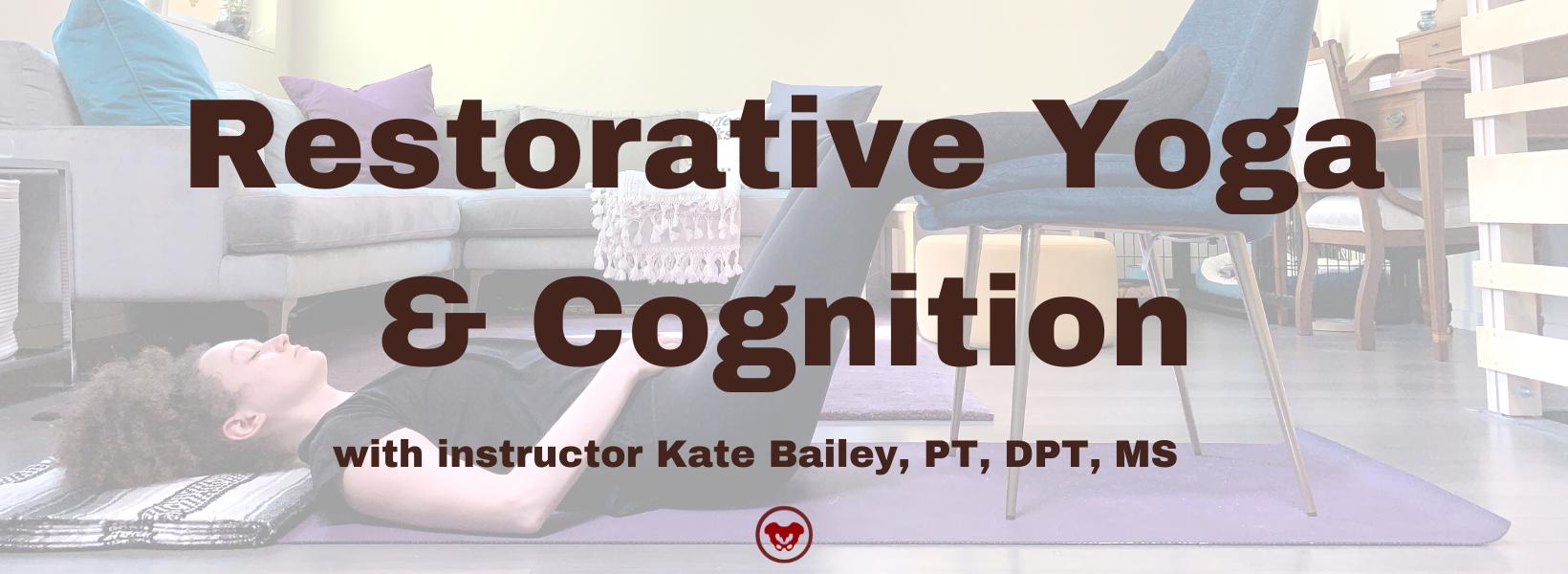
Allison Ariail, PT, DPT, CLT-LAANA, BCB-PMD is one of the creators of the Herman & Wallace Oncology of the Pelvic Floor Course Series as well as created the Rehabilitative Ultraosund courses.. Allison Ariail is a physical therapist who started working in oncology in 2007 when she became certified as a lymphatic therapist. You can join Allison in her upcoming two-day course September 29-30 (Rehabilitative Ultrasound: Orthodedic Topics) or the extended three-day course Rehabilitative Ultrasound: Women's Health and Orthodedic Topics that is through October 1st. You can also see Allison at HWConnect in the vendor hall where she will be doing ultrasound demonstrations. HWConnect is being held in Seattle, Washington this October 6-8, 2023.
“The widespread use of imaging has the potential to change the management of pelvic floor morbidity, such as urinary and anal incontinence, pelvic organ prolapse and related conditions ………. the insights provided by real-time imaging will enhance diagnostic and therapeutic capabilities.”1 This is a quote from an opinion article in Obstetrics and Gynecology by Hans Peter Dietz. Dietz has been researching the use of ultrasound and how it can assist in the diagnosis and treatment of pelvic floor disorders for years. I couldn’t agree more with this quote! Over the last 20 years that I have been using US imaging in my practice, I have seen more and more clinicians embrace ultrasound and let it change how they treat patients.
I have always told clinicians that using ultrasound will not only change your practice, but it will change patients’ lives. From using it to help postpartum women relearn to activate their core muscles, to helping chronic back pain patients that don’t get better with traditional treatment, to recent advances in a more targeted training method for postprostatectomy patients; using ultrasound will influence your treatments and help patients get back to living the lives and doing what they love to do.
In my experience, using ultrasound has been a rewarding experience to see how this tool can assist patients to meet their goals. There is something about the visual biofeedback and seeing what it happening inside the body to help patients have that “aha” moment where they get excited about treatment, become more motivated, and start to see results that they may not have had before. I recently had a patient that came to see me after having multiple sessions of therapy for urinary incontinence after a prostatectomy with another very qualified clinician. He was still having some leakage with sit-to-stand and during his tennis game. We were able to use ultrasound imaging to see that when he was performing a task that required more physical effort, he was no longer holding the pelvic floor contraction and was in fact using the incorrect strategy that increased pressure on his bladder. The visual biofeedback provided by ultrasound helped him learn to properly engage his pelvic floor with sit-to-stand and during athletic maneuvers. I only saw this patient for two treatments before I received a call from him telling me that he had seen so much progress and was doing so well that he felt he was ready to graduate from therapy.
Ultrasound can change your clinical practice. You can use it with back and sacroiliac joint patients, urinary and fecal incontinence patients, prolapse patients, post-prostatectomy patients, bowel patients, postpartum patients,….the list goes on! The prices of ultrasound units continue to go down and make it much more affordable for clinicians to be able to afford. I would recommend considering adding this tool to your list of available tools in your clinic.
At HWConnect, you will hear speakers discuss using ultrasound in their research and can see a demo of ultrasound use for a pelvic floor patient. You can also learn to use ultrasound in your practice with a Rehabilitative Ultrasound Imaging course offered through Herman and Wallace this September, as well as several dates for next year! If you do decide to get this exciting new tool, I promise you won’t be disappointed once you learn to use it and implement it into your clinical practice!
References:
- Dietz, HP. Ultrasound in the investigation of pelvic floor disorders. Curr Opin Obstet Gynecol. 2020; Dec; 32(6):431-440.

Rehabilitative Ultrasound Imaging - Women's Health and Orthopedic Topics - September 29 - October 1, 2023
*3 Day course (Friday-Saturday-Sunday) with internal and external labs
Experience Level: Intermediate
Contact Hours: 22.5
Description: This three-day course is designed to provide instruction in the generation and interpretation of rehabilitative ultrasound images as they relate to the pelvic girdle. Both lecture and lab material will be presented that will allow the participant to immediately incorporate the use of rehabilitative ultrasound imaging into their evaluation and treatment plans for patients with diagnoses including lumbopelvic pain and instability, pelvic organ prolapse, and urinary incontinence.
The course comprises of lectures and labs that present both ideal and abnormal responses of real-time imaging of the transverse abdominals, rectus abdominis, deep multifidus, levator ani, bladder, bladder neck, urethra, and vagina during contraction and Valsalva. Imaging methods used during labs will consist of transabdominal viewing as well as transperineal/translabial viewing methods. Prior experience with perineal and vaginal assessments is required to take the course. During labs, participants will be able to practice using machines provided by course sponsors.
This is an intermediate-level rehabilitative ultrasound imaging course intended for therapists having sound knowledge of training techniques for the local stabilizing muscles of the pelvic floor, transverse abdominals, and deep multifidi muscles and experience with internal vaginal exams. Prior coursework regarding the local stabilizing muscles (Diane Lee/ Linda Joy Lee, Paul Hodges, Pelvic Floor/Pelvic Girdle) is required.

Rehabilitative Ultrasound Imaging - Orthopedic Topics - September 29-30, 2023
*2 Day course (Friday-Saturday) with external labs only
Price: $475
Experience Level: Intermediate
Contact Hours: 14
Description: This two-day course is designed to provide instruction in the generation and interpretation of rehabilitative ultrasound images as they relate to the pelvic girdle and low back stabilization. Both lecture and lab material will be presented that will allow the participant to immediately incorporate the use of rehabilitative ultrasound imaging into their evaluation and treatment plans for patients with diagnoses including lumbo-pelvic pain and instability.
This course comprises of lectures and labs that present both ideal and abnormal responses of real-time imaging of the transverse abdominals, rectus abdominis, deep multifidus, levator ani, bladder, and bladder neck. During labs, participants will be able to practice using machines provided by course sponsors.
This is an intermediate level rehabilitative ultrasound imaging course intended for therapists having a sound knowledge in training techniques for the local stabilizing muscles of the pelvic floor, transverse abdominals, and deep multifidi muscles. Prior coursework regarding the local stabilizing muscles is required.

Tara Sullivan, PT, DPT, PRPC, WCS, IF is on faculty with Herman & Wallace. She created Sexual Medicine in Pelvic Rehab and co-created Pain Science for the Chronic Pelvic Pain Population which she instructs alongside co-creator Alyson N Lowrey, PT, DPT, OCS. Tara started in the healthcare field as a massage therapist, practicing over ten years including three years of teaching massage and anatomy and physiology and has specialized exclusively in Pelvic Floor Dysfunction treating bowel, bladder, sexual dysfunctions, and pelvic pain since 2012. Join Tara in her next on September 23-24 in her remote course Sexual Medicine for Pelvic Rehab.
Since 2012, Dr. Tara Sullivan, PT, PRPC, WCS, IF, has exclusively specialized in pelvic pain and treating pelvic floor dysfunction (PFD). Previously, she worked as a massage therapist while attending college to eventually receive a doctorate degree in physical therapy from A.T. Still University. Sullivan continued her education to earn a Pelvic Rehabilitation Practitioner Certification (PRPC), which showcases her expertise in the field of pelvic rehabilitation. She also serves as a fellow of the International Society for the Study of Women's Sexual Health and is a board-certified clinical specialist in women’s health.
Sullivan established the pelvic health program at HonorHealth in Scottsdale, Az., which now has nine locations. She mentors 11 pelvic physical therapists locally and also teaches other physical therapists throughout the country about pelvic health as a member of the faculty team at Herman and Wallace. Sullivan passionately educates both the public and other healthcare providers about PFD and its treatment through her own website. She recently took the time to share some of her passion for pelvic floor health with us, including misconceptions about PFD, how she’s treating it, and what she’s excited about for the future.
What changes have you seen in the 11 years you’ve been treating PFD?
“The best change I’ve seen is that there’s more awareness from the medical community that pelvic therapy is beneficial for more than incontinence,” Sullivan said. “It used to be harder to get referrals for patients from doctors to pelvic therapy. They didn’t know we existed or they thought we only taught patients how to do Kegels.”
Nowadays, though, Sullivan said more and more doctors have begun to recognize the role pelvic floor physical therapy can play in treating patients with IC. Patients are benefitting from more public awareness and medical recognition of pelvic floor physical therapy.
“We can help patients with most bowel, bladder, and sexual dysfunctions and pelvic pain,” Sullivan said. “People don’t have to live with these debilitating conditions.”
What are some misconceptions IC patients have about PFD?
Sullivan often encounters patients who think IC is a very specific diagnosis separate from the pelvic floor. However, for IC patients without Hunner’s ulcers, the bladder is not usually the only cause of their symptoms, including pelvic pain.
“Patients and doctors don’t recognize the relationship between the pelvic floor and the bladder,” she said. Pelvic floor dysfunction can mimic and trigger the urinary symptoms associated with IC/BPS.
What treatments for PFD are you utilizing most right now?
Sullivan has two main components to treating PFD: bladder retraining and manual therapy.
“We do bladder retraining to teach the brain to not misinterpret a signal that it received from the bladder or nearby structures,” Sullivan said. “When you have IC, there are a lot of sensations that are being misinterpreted by the brain.”
The ultimate goal of bladder retraining is teaching patients how to discern between an IC urge or pain versus a normal bladder sensation. “We’re tapping into the neural loop that’s teaching the brain, the bladder, and the pelvic floor what is what,” Sullivan said.
Manual therapy is an in-office component of her treatment for PFD. She works externally on fascial training as well as intravaginally and intrarectally to help muscles release their tension. With a variety of techniques, Sullivan helps patients to down-train — or learn to relax — their pelvic floor muscles. She uses dry needling to help release those same muscles or trigger points and to down-train the nervous system as well. A needle similar to the ones used in acupuncture, is inserted right into a trigger point in a tense muscle. Sullivan said needle insertion may be uncomfortable, but many patients report feeling calm and a release just after insertion as the muscle begins to relax.
How does nutrition play a role in pelvic floor health?
“What we eat and drink causes inflammation,” she said. “Sugar, spicy and other acidic food and beverages increase inflammation in the body, especially the bladder.”
A normal amount of inflammation is healthy for healing; however, too much inflammation can have the opposite impact. While a non-ICer may be able to tolerate the inflammation from certain foods without as much repercussion, it may be more than an IC body can manage. Sullivan said if we picture inflammation in the body as being a cup, we’re fine as long as the cup doesn’t get overfull.
“That cup is constantly not getting too full,” she said of a healthy body. “It’s emptying, filling, emptying, filling. Our body is finding that balance. With patients who have IC, think of that cup as finally full and it’s overfilling.”
What might be a normal amount of inflammation for someone without IC will be more than the IC body can handle. Sullivan said diet modifications are a big component of her treatment of PFD patients. She has patients stick with a diet of foods and beverages that won’t increase inflammation.
“We have to empty the cup and then teach the body to be more balanced so that they can tolerate those [inflammatory components] in the future," Sullivan said.
What research are you most excited about for the future?
“A huge component that we keep overlooking is the effect of birth control on our overall body, but our bladder as well,” Sullivan said, mentioning she’s had many IC patients feel significantly better once they stopped oral contraceptive pills. “There’s a hormonal component to IC as well. The bladder likes estrogen which is suppressed with hormonal birth control. I’d like to see more research on how birth control is related to IC.”
She also hopes to see breakthroughs in is the neurological pain science connection to IC. She said research has already shown that the brain interprets symptoms of IC, not the bladder. As such, she’d like to see that research expounded upon.
Where can patients go to find a good pelvic floor physical therapist near them?
Finding a physical therapist trained in pelvic floor physical therapy is important. Fortunately, more and more facilities offer pelvic floor physical therapy. Sullivan said she recommends patients check out PelvicRehab.com a site run by Herman and Wallace that helps patients find qualified pelvic floor physical therapists in their area.
Special thanks to Tara Sullivan and article author Stacey A. Shannon for allowing Herman & Wallace to share this article. The original post can be found on the IC Network site here: https://www.ic-network.com/getting-to-know-the-experts-dr-tara-sullivan/.
Sexual Medicine in Pelvic RehabSexual Medicine in Pelvic Rehab - September 23-24, 2023
Price: $450
Experience Level: Beginner
Contact Hours: 15
Description: This two-day, remote continuing education course is designed for the pelvic rehab specialist who wants to expand their knowledge, experience and treatment in sexual health and dysfunction. This course provides thorough introduction to pelvic floor sexual function, dysfunction and treatment interventions for males and females of all sexual orientations, as well as an evidence-based perspective on the value of physical therapy interventions for patients with chronic pelvic pain related to sexual conditions, disorders, and multiple approaches for the treatment of sexual dysfunction including understanding medical diagnosis and management.
Lecture topics include hymen myths, squirting, G-spot, prostate gland, sexual response cycles, hormone influence on sexual function, anatomy and physiology of pelvic floor muscles in sexual arousal, orgasm, and function and specific dysfunction treated by physical therapy in detail including vaginismus, dyspareunia, erectile dysfunction, hard flaccid, prostatitis, post prostatectomy; as well as recognizing medical conditions such as persistent genital arousal disorder (PGAD), hypoactive sexual desire disorder (HSDD) and dermatological conditions such as lichen sclerosis and lichen planus. Upon completion of the course, participants will be able to confidently treat sexual dysfunction related to the pelvic floor as well as refer to medical providers as needed and instruct patients in the proper application of self-treatment and diet/lifestyle modifications.

Sarah Hughes PT, DPT, OCS, CF - L2 has been a practicing physical therapist since 2007 and opened her private practice Arrow Physical Therapy in 2016. She now owns and operates Arrow remotely while residing in the Chicago area and practicing at Outlier Physical Therapy. Her specialties include dance medicine, the CrossFit and weightlifting athlete, and conditions of the hip and pelvis such as femoroacetabular impingement and labral tears. Dr. Hughes earned a BS in exercise science from Gonzaga University and a DPT from the University of Washington, she wrote and instructs Weightlifting and Functional Fitness Athletes.
Modifying exercise, particularly CrossFit and weightlifting exercises, when pregnant is critical to reducing your risk for injury. It’s hard to do for sure. We all want to maintain our fitness and remain competitive. But, the priority during and after pregnancy is the safety and health of both baby and the birthing person.
Remember, just because you aren’t in pain or you are still capable of performing in the way you did pre-pregnancy, you may be doing yourself a disservice by setting yourself up for problems down the line, or at the very least some bad habits as you change your technique with various movements.
Of course, we are not discouraging exercise. In fact, please continue to exercise!! But, just use your best judgment and consider the ways in which you might modify your workouts during your pregnancy.
Below are modification examples:
MODIFY OLYMPIC LIFTS:
- Start at the “hang” positions: Modify the lifts by starting from the hang position when the belly increases in size, as this makes it harder to lower the barbell to the ground.
- Finish in the “power” position: Often pregnant people don’t feel comfortable catching in the squat position. You can still work these barbell movements by catching in power positions.
- Forego the barbell: Finally, when the size of the pregnant belly starts to change the bar path (ie. you are swinging that weight way out in front to avoid hitting your bump), consider switching to dumbbells or kettlebells for the Olympic lifts. An improper bar path leads to bad habits and can cause injury.
MODIFY OTHER STRENGTHENING LIFTS:
The biggest thing to note here is that there is no reason to be doing max efforts when you are pregnant. You are probably not going to be setting any records and the cost/benefit may not end up being worth it. However, that is not to say you shouldn’t be lifting, or even lifting heavy. Just be sure that you are managing your breathing and not creating too much pressure with these lifts. You need to be exhaling as you exert effort so as to avoid bearing down into the pelvic floor and abdominals.
A few specific notes:
- when it comes to moving weight overhead, be sure that you are not over-arching your back and instead keeping the weight manageable so that you can maintain the best form.
- if squatting feels vulnerable because the bottom of the position feels weak, you can squat to a box to limit the range of motion. You will still be able to strengthen while protecting your body from an unstable position.
- when deadlifting, really think about dialing weight back in order to avoid using a bearing down Valsava maneuver.
MODIFY KIPPING MOVEMENTS:
Pregnant or postpartum people may experience a “separation” of the abs which we call a diastasis recti. Diastasis recti is caused by a stretching of the linea alba, the tissue that connects the left and right halves of the rectus abdominis muscle. This is a very common condition caused by the growing uterus expanding against the abdominal muscles.
This can happen naturally, just by nature of the abdomen growing. However, if you have a weak core wall or are not properly engaging it during a kipping motion, you might be making the condition worse. It’s not necessarily that you aren’t skilled enough to do the movement, but rather that your core is stretched out (thanks baby!) and the muscles are unable to contract appropriately after a certain point. By continuing to kip when this is the case, you are risking over-stretching your core wall.
- Kipping motions include: pulls up, muscle-ups, toe-to-bars, knees to elbows & knee raises.
- Modify by doing strict motions (band them as needed).
- Pull-ups can be further modified with ring rows.
- Toes-to-bar and knees-to-elbow can take a back seat. Perform Russian swings with a kettlebell if you want a metabolic stimulus and planks if you want a core stimulus.
- The ability to kip will return. You aren’t losing out on anything.
MODIFY MUSCLE UPS:
Muscle Ups: same as above. Let’s stay strict and no Valsalva maneuver. You want to avoid pressure bearing down on the pelvic floor.
If these modifications are out of reach, you can practice muscle-up transitions from your toes or using a band. You can also modify with jumping muscle-ups (stick to the ring as you won’t want your belly to hit that bar).
MODIFY PLANKS AND HOLLOW HOLDS:
If you cannot feel your abs engaging, chances are that they aren’t. You can try side planks perhaps or planks on an elevated surface. At some point, you might just cut them out of your program.
MODIFY BURPEES:
Step out to a plank and back up. You can also do an incline push-up using a bench, plates or boxes. If you are adding a jump over a barbell or other apparatus consider stepping over to avoid a potential fall and to minimize the impact through the pelvis. If burpees lead to incontinence or an “urge sensation”, modify.
A quick guide to common movement substitutions:
- Kipping Pull-Up = controlled kipping without pull-up, strict pull-up, or ring row.
- Kettlebell Swing = may modify to single arm swing for comfort on the back swing, may modify to Russian swing.
- Deadlift = sumo or kettlebell deadlifts may be more comfortable.
- Sit Ups = plank, pallof press, slam ball, side plank, hanging knee raise.
- Bench Press = press, push up (elevated as necessary).
- Handstand Push Up = modified pike on box or floor, dumbbell or barbell press/push press.
- Box Jump = lower box at first, and then step up.
- Snatch/Clean =hang power versions, then dumbbells as necessary once the belly is in the way. Can perform the power version of the movement and then squat under control. Moderate load deadlifts are also a great sub.
- Jump Rope/Running = as far as your level of comfort allows. Rowing is a good sub. Kettlebell swings and/or slam ball for a similar metabolic effect.
- Thrusters/Wall Ball = controlled squat and presses either with a barbell or dumbbells.
- Push Ups/Burpees = on a raised surface like a box, parallettes or a bar in a squat rack.
Of course, there are many many other modifications and these are not meant to be medical advice. Talk to your physical therapist or coach and listen to your body!
Sarah Hughes' original article can be found on the Arrow Physical Therapy website at https://www.arrowptseattle.com/news/crossfitmodificationsforpregnancy.

Weightlifting and Functional Fitness Athletes - October 14, 2023
Price: $295
Experience Level: Beginner
Contact Hours: 9
Description: When it comes to Crossfit and Weightlifting, opinions are divided among Physical Therapists and other clinicians. Why is it that these sports cause such strong differences among rehab professionals? In this half-day, remote continuing education course, instructor Sarah Haran PT, DPT, OCS, CF-L2 looks at the realities and myths related to Crossfit and high-level weight-lifting with the goal of answering “How can we meet these athletes where they are in order to keep them healthy, happy and performing in the sport they love?" This course will review the history and style of Crossfit exercise and Weightlifting, as well as examine the role that therapists must play for these athletes. Common orthopedic issues presented to the clinic will be examined. However, while things like urinary function, pregnancy and postpartum, hip impingement, LBP/pelvic pain, prolapse, and diastasis will be touched on, this will not be a course in addressing pelvic health concerns in these athletes. These topics will be more fully addressed in the course: Pregnancy and Postpartum Considerations for High-Intensity Athletics with Emily McElrath.
Labs will introduce and practice the movements of Crossfit and Weightlifting, discussing the points of performance for each movement. The practitioner will not only learn how to speak the language of the athlete but will experience what the movement feels like so that they may help their client to break it down into its components for a sport-specific rehab progression. The goal of this course is to provide a realistic breakdown of what these athletes are doing on a daily basis and to help remove the stigma that this type of exercise is bad for our patients. It will be important to examine the holes in training for these athletes as well as where we are lacking as therapists in our ability to help these individuals. We will also discuss mindset and culture issues such as the use of exercise gear (i.e. straps or a weightlifting belt), body image, and the concept of "lifestyle fitness". Finally, we will discuss marketing our practices to these patients.

The message below is written by HW Senior Faculty Member Jennafer Vandevegte and Elizabeth Akincilar, the Co-Program Directors of the Pelvic Health Physical Therapy Program.
I am writing to introduce an exciting new initiative that will create scholarship opportunities for Kenyan physical therapists pursuing a degree specializing in pelvic health physical therapy.
The Jackson Clinics Foundation was formed in 2012 to fund educational efforts in East Africa. To date, the foundation has sent over 100 faculty members from their clinics and from around the country to teach in East and Central Africa. Some of the best and brightest physical therapists in the United States have volunteered their time to travel to Africa to teach these students and upgrade their education.
In 2019 the Pelvic Health Physical Therapy program in Kenya was launched by the Jackson Clinics Foundation and the Kenya Medical Training College with educational content and instructor support from the Herman and Wallace Pelvic Rehabilitation Institute and Pelvic Health and Rehabilitation Center. As you may be aware, pelvic health issues have become increasingly common in Kenya, with millions of people suffering from conditions like urinary incontinence, pelvic organ prolapse, and sexual dysfunction secondary to untreated medical conditions such as vaginal fistulas and the deleterious effects of female genital mutilation and prostate cancer. Unfortunately, there is a lack of trained professionals in this field to provide the necessary care and treatment to those affected. In fact, this program trained the first group of pelvic health physical therapists in all of East Africa.
Due to the enormous success of the initial Pelvic Health Physical Therapy program and the growing need for specialized physical therapists, The Jackson Clinics Foundation has created a two-year degree specializing in Pelvic Health. This program will become available to Kenyan physical therapists in 2024. This advanced degree will provide extensive training in assessing and treating various pelvic health conditions for adults and children. Additionally, graduates of this program will also learn how to teach their medical colleagues about pelvic health issues, bringing much-needed attention to the grossly untreated pelvic health conditions in East and Sub-Saharan Africa.
The tuition costs for this program are the primary obstacle preventing therapists from pursuing this advanced degree; therefore, we have established the Pelvic Health Physical Therapy Scholarship Fund. The fund will provide financial assistance to physical therapists in Kenya who are interested in pursuing their specialized training in Pelvic Health.
The scholarship fund seeks to raise $36,000 over the next year. We would be honored if you could contribute any amount towards this goal. Your tax-deductible contribution will go directly to the scholarship fund and will be used exclusively for pelvic health program scholarships.
Please visit our website to donate to this fund. Click on the dropdown menu to select Pelvic Heath. We appreciate any support you can offer us.
Thank you for considering this request. The infrastructure is in place, and the programs are ever-expanding and improving. These initiatives have one purpose: To improve human lives. We function under one premise, "Teach One - Treat Many." Together, we can create a healthier and more vibrant future for Kenyan communities.
Sincerely,
Elizabeth Akincilar Jennafer Vandevegte
Co-Program Director Co-Program Director

The Herman & Wallace Pelvic Floor Series and the Pregnancy and Postpartum Series course content will comprise the two-year degree and are being adapted for this audience by Senior H&W faculty member Jennafer Vande Vegte, Program Co-Director along with Elizabeth Akincilar. This degree will also include information from other contributors, including H&W faculty members Dawn Sandalcidi (on Pediatrics) and Ramona Horton (on visceral mobilization).
If you would like to learn more about this program, Jennafer and Elizabeth will be at HWConnect 2023, where a booth will be devoted to fundraising and spreading information about this incredible opportunity to bring pelvic rehab education to a greater audience across the globe.

Jennafer Vande Vegte, MSPT, BCB-PMD, PRPC began her career as a physical therapist at Spectrum Health in Grand Rapids, MI. Since 2002 Jen has focused her professional attention on treating women, men, and children with pelvic health disorders. She has been faculty for Herman and Wallace Pelvic Rehabilitation Institute since 2009 and loves to inspire other rehab professionals treating pelvic floor dysfunction. She is an author of the chapter, “Manual Therapy for the Pelvic Floor” which was published in the book, “Healing in Urology.” Jen was a contributing writer for the Pelvic Floor Capstone curriculum and also co-authored the continuing education course, “Boundaries, Self-Care and Meditation” with Nari Clemons.
Do you ever feel like you put more care into treating your patients than do for themselves?
Do you often have patients reaching out to you via phone or email outside of their appointment times?
Do you feel alternatively burdened by patient care/documentation and proud of the way you give 100% to your work?
Do you often give your all to your patients and come home depleted and even grumpy with the people you love?
As rehab professionals, we had to work really hard, and strive even, to get really good grades in high school and college to be accepted into our rigorous and demanding training programs. We developed strong work ethics and were praised for our success. During those years, self-care may not have been a priority. Maybe we were single, childless with significantly fewer responsibilities. We could put the pedal to the proverbial metal and keep on going.
Did anyone in school teach us about energy preservation? Offer up the idea that if we continued to work that hard, and give that much it would lead to job DISsatisfaction, compromise our relationships and our health and lead to burnout.
Probably NOT.
So we kept working and striving in our jobs, even though now our LIVES were getting more complicated. Maybe we found a life partner. Perhaps we bought a home. We found pets to care for. Maybe we had children. And we found ourselves utterly exhausted.
If this story sounds familiar to you, Nari Clemons and I would love to invite you to a different way to practice. A different way to live. We designed our class “Boundaries, Self-Care and Meditation” for YOU to find joy in work-life balance. To love what you do, but leave work with energy for all the things you love OUTSIDE of work.
Using a shared responsibility model, you will gain skills in allowing patients to own the responsibility for their recovery. You will illuminate where you are losing energy and develop the skillfulness to shift. Meditation and mindfulness will become a means to a healthier, more balanced nervous system for yourself as well as for your patients.
In short, this class can be LIFE-CHANGING. For both you and your relationships with your patients and the people in your life.
We invite you into a new way. Come join us this fall.

Boundaries, Self-Care, and Meditation Part 1 - September 9, 2023
Price: $400
Experience Level: Beginner
Contact Hours: 12.5
Description: This course is a two-part series intended to be completed in order. Participants should register for Part 1 and Part 2 at the same time, or complete Part 1 and wait to complete Part 2 at a later date. This course was developed by Nari Clemons, PT, PRPC, and Jennafer Vande Vegte, PT, PRPC, and was "born out of our own personal and professional struggles and our journey to having a life and a practice that we love and can sustain." The intention of this class is deep, personal, and professional transformation through evidence-based information and practices.
The instructors recommend completing this series in two parts to allow time to process and implement one leg of the journey before undertaking the next. Both Part One and Part Two have a significant amount of pre-work to digest and practice before meeting via Zoom. Please plan for up to 12 hours of pre-course work. This sets the stage for you to find your path to experiencing more joy, energy, and balance.
In Part One. participants begin their process of study, meditation, and self-reflection in the weeks prior to the start of the class. Pre-work includes a focus on the neuroscience of pain, trauma, PTSD, and meditation. Participants will learn about the powerful influence both negative and positive experiences have on our nervous system’s structure and function. Personal meditation practice and instruction will create changes in the participant's own nervous system. Participants will also learn how to prescribe meditation for various patient personalities and needs, as well as analyze yourself through inventories on coping, self-care, empathy, burnout, and values as well as track how you spend your time. Commitment to pre-work will facilitate rich discussion as we put what you have learned into practice around building a shared responsibility model of patient care, language to support difficult patients, and both visualizing and planning steps to create new, healthier patterns in your life and in your practice.

Boundaries, Self-Care, and Meditation Part 2 - November 4, 2023
Price: $400
Experience Level: Beginner
Contact Hours: 13
Description: This course is a two-part series intended to be completed in order. Participants should register for Part 1 and Part 2 at the same time, or complete Part 1 and wait to complete Part 2 at a later date. This course was developed by Nari Clemons, PT, PRPC, and Jennafer Vande Vegte, PT, PRPC, and was "born out of our own personal and professional struggles and our journey to having a life and a practice that we love and can sustain." The intention of this class is deep, personal and professional transformation through evidence-based information and practices.
The instructors recommend completing this series in two parts to allow time to process and implement one leg of the journey before undertaking the next. Both Part One and Part Two have a significant amount of pre-work to digest and practice before meeting via Zoom. Per the instructors "This sets the stage for you to find your path to experiencing more joy, energy, and balance."
Part Two continues the focus on personal and professional growth for the participant, with a deeper dive into meditation and self-care practices. Yoga is introduced as a means of mindful movement and energy balance. Participants will learn to identify unhealthy relational patterns in patients and others and skills on how to use language and boundaries to create shifts that keep the clinician grounded and prevent excessive energic and emotional disruptions. There is a lecture on using essential oils for self-care and possibly patient care. Learning new strategies to preserve energy, wellness, and passion while practicing appropriate self-care and boundaries will lead to helpful relationships with complex patients. This course also includes a discussion of energetic relationships with others as well as the concept of a "Higher Power". Discussion will also include refining life purpose, mission, and joy potential, unique to the individual participant. The goal is that the participating clinician will walk away from this experience equipped with strategies to address both oneself and one's patients with a mind, body, and spirit approach.

Mora Pluchino is instructing her new course, Pediatric Pelvic Floor Play Skills, which is scheduled to debut on October 22, 2023. This short course is targeted to pelvic health providers looking for specific “child-oriented” treatment techniques for pediatric pelvic health patients. This class will cover some basic challenges and changes for a new or experienced pelvic health provider entering the realm of treating pediatric patients with pelvic floor diagnoses. Pediatric Pelvic Floor Play Skills is intervention focused and does not delve into specific pediatric diagnoses.
As an only child, I have lived my life working to be surrounded by children. From the age of 11 when I could take the Red Cross’s babysitter training, I worked as a mother’s helper, babysitter, and nanny. I never even had a “real” job until beginning my career as a physical therapist in 2009. Before I entered the world of treating pelvic floors, I was a physical therapist who spent the beginning years of my career caring for mostly pediatric and neurological patients. I was in charge of a pediatric program and helped with their specialty programs for kids including cardiopulmonary, feeding, and robotics.
I got brave and jumped into pelvic floor treatment in 2016 and have never looked back.
Because I had so much “kid” experience both personally and clinically, I quickly took Dawn Sandalcidi’s course Pediatric Incontinence and Pelvic Floor Dysfunction (now called Pediatrics Level 1 - Treatment of Bowel and Bladder Disorders). I started treating these kiddos and realized that being a pediatric therapist and being a pelvic floor therapist can feel like two completely different “hats.” I would have internal conversations like “I want to teach this child to bear down, but they’re two years old and on the autism spectrum and cannot even tolerate sitting on a toilet - what do I do?”
Having a pediatric background and skills made me feel like I had tools in my toolbox to create ideas to address my plan of care. I found my colleagues who did not have as much pediatric experience really struggled with taking the pelvic floor skills they had and applying them to working with children in the clinic.
Here is an example of calls I get from fellow pelvic floor practitioners…
“A 5-year-old child presenting with bedwetting, stool staining, and daytime urinary urgency. Limited food choices - eats mac and cheese, grilled cheese, quesadillas, chicken nuggets, hot dogs, and goldfish - no veggies, fruit choices - bananas and strawberries only. The child does not drink water but will drink juice, Coke, and chocolate milk. The child does not like sports and prefers to read and watch TV. The child avoids sitting on the toilet for BMs and complains they are painful. Parents are willing to try anything but don’t know where to start. The child is very motivated to please caregivers and loves stickers and watching YouTube videos of cute cats. On assessment, the child has a weak core, poor sitting posture without back support, and has trouble bearing down when asked.”
The therapist and I talked about how these symptoms all screamed “pediatric constipation” with a little bit of core weakness and poor pelvic floor coordination mixed in. She knew what would happen with an adult. She knew that increasing fiber and water intake as well as activity were all great lifestyle changes to start. She mentions that utilizing a squatty potty and regular toilet sits are also indicated. But HOW do you get a 5-year-old to do these things? How do you teach parents to implement these changes? How do you make these changes easy and peaceful for busy parents and potentially resistant children?
In the case of this kiddo, we created the following plan:
- Referral for feeding therapy to address problem feeding - SOS Program with an OT at local children’s hospital with reinforcement and collaboration from a PF therapist.
- Spoke to the pediatrician about dietary changes including using higher fiber options of preferred foods and eliminating foods that are bladder irritants or known to be constipating.
- Pelvic floor therapy working on core and pelvic floor coordination with functional play utilizing the child’s preferences.
- Review of HEP with family including ILU massage, time voiding (created a child-friendly routine), and implementation of a reward system for child’s compliance with the program.
- Daily check-ins with family to make sure they and their child are able to stay compliant with the prescribed changes.
If you are looking at this plan thinking “BUT HOW” this may be a great class for you. Pediatric Pelvic Floor Play Skills is an intervention-focused one-day remote class is targeted to pelvic health provider looking for specific and “child-oriented” treatment techniques for the pediatric pelvic health patient (it does not delve into specific pediatric diagnoses). This class will cover some basic challenges and changes for a new or experienced pelvic health provider entering the realm of treating pediatric patients with pelvic floor diagnoses.
The course goal is to review topics related uniquely to treating the pediatric population and then review treatment skills for different age groups. Get ready to learn basic pediatric care topics such as postural, developmental, feeding, and behavioral considerations. The labs will include both observational and interactive lab experiences designed to teach ANY therapist multiple treatment and play techniques to incorporate into their pediatric practice. The in-person aspect of this course involves movement and play, so be ready to observe and then practice some kid-friendly activities.
Pediatric Pelvic Floor Play Skills

Course Dates: October 22
Price: $275
Experience Level: Beginner
Contact Hours: 10
Description: This one-day remote continuing education class is targeted to any pelvic health provider looking for specific and “child oriented” treatment techniques for the pediatric pelvic health patient. This class will cover some basic challenges/ changes for a new or experienced pelvic health provider entering the realm of treating pediatric patients with pelvic floor diagnoses. This class is intervention focused and does not delve into specific pediatric diagnoses.
This course will begin with a combination of lectures on basic pediatric care topics such as postural, developmental, feeding, and behavioral considerations. The labs will include both observational and interactive lab experiences designed to teach ANY therapist multiple treatment and play techniques to incorporate into their pediatric practice. The in-person aspect of this course involves movement and play, so please plan your space and clothing accordingly.
This course will be instructed by Mora Pluchino, PT, DPT, PRPC who is a physical therapist with experience in both pelvic health, pediatrics, and pediatric pelvic health. This class is designed for a clinician who has already taken pelvic floor education including Pelvic Floor Level 1 and/or Pediatrics Level 1 -Treatment of Bowel and Bladder Disorders or something equivalent and is looking for play oriented treatment ideas.

Caitlin Smigelski, PT, DPT is a pelvic floor physical therapist in Portland, OR. She focuses in the treatment of bowel and bladder dysfunction and complex pelvic pain and specializes in transgender health and the treatment of patients who are pregnant or postpartum. Caitlin values active treatment approaches and teaching individuals ways to manage and improve their symptoms. She is active with the Academy of Pelvic Health Physical Therapy and serves on the CAPP-OB committee and is also a member of the World Professional Association for Transgender Health (WPATH). Caitlin and Sandi Gallagher traveled to Argentina to present at the 2018 WPATH Symposium on Physical Therapy in People Undergoing Vaginoplasty.
As Pride Month comes to an end, it’s important to reflect on how healthcare providers can promote a safe and inclusive environment for all patients. Members of the transgender community face discrimination and increased barriers to accessing healthcare. According to a 2022 survey by the Kaiser Family Foundation of transgender adults
- ● 38% report it is somewhat or very difficult to find a healthcare provider who treats them with dignity and respect.
- ● 47% report healthcare providers know “not too much” or “nothing at all” about providing care to trans people
- ● 31% report having to teach a provider
- ● 29% have been asked unnecessary or invasive questions by a healthcare provider
Healthcare providers need to improve the care it provides the transgender community. By being an active ally in your clinic, you can facilitate positive change. Active allyship is when a person with privilege and power supports people who are marginalized. It requires more than just solidarity, but taking action. Below are just a few steps you can take to improve the experience of a transgender person in your clinic.
- Pronouns:
○ Share your pronouns verbally, on your ID badge, bio, business card etc. This normalizes the act of sharing one’s pronouns and creates a safer space for all.
○ Ask all of your patients for their pronouns via an intake form or during the interview.
○ Never assume someone's gender identity based on their appearance, and don't hesitate to ask individuals for their pronouns.
○ Correct coworkers if they misgender a patient, even when the patient is not present.
- Gender-neutral language:
○ Edit intake forms for inclusivity. Ask about sex assigned at birth, gender identity and pronouns followed by a blank space for the patient to fill in.
○ Avoid gendered language in the clinic such as guys and ladies and gentlemen. Instead use terms like folks, y’all, people, everyone etc.
○ Only use gendered terms like Sir, Ma’am, Mr. and Ms. once someone has shared their gender and pronouns.
○ Don’t assume the relationship or gender of a person who comes with your patient to an appointment
- Bathrooms:
○ If your facility has single stall bathrooms, make them gender-neutral.
○ If a single-user restroom is not an option, post signs and have a written policy that supports people to use the bathroom that matches their gender identity.
- Policies and Statements
○ Use your voice to advocate for inclusive policies within your healthcare institution. Encourage the adoption of policies that protect transgender patients from discrimination, such as:
■ the availability of gender-neutral bathrooms
■ gender-affirming documentation processes
■ non-discriminations policies inclusive to transgender individuals
■ publishing statements supporting health care for transgender people and youth
■ staff trainings
○ Encourage your professional organization to publish a statement in support of transgender healthcare. Many professional organizations have already issued statements, including the AMA, AAP, ACOG, ANA, ACNM, and WHO.
○ Learn about laws and policies affecting transgender people where you live. When discriminatory and harmful laws are present, call or email your representative or sign a petition to support positive change.
- Educate yourself and your coworkers
○ A key step towards becoming an active ally is to educate yourself about transgender identities, experiences, and healthcare needs. Understanding the unique challenges faced by transgender individuals will enable you to provide compassionate and informed support.
○ Read books, articles, and research papers written by transgender authors or experts in the field.
○ Take a course specific to rehabilitation. Herman and Wallace offers two remote courses: Transgender Patients: Pelvic Health and Orthopedic Considerations (17 contact hours) and Inclusive Care for Gender and Sexual Minorities (15.5 contact hours)
○ Learn from online resources. A few examples include the National LGBTQIA+ Health Education Center through the Fenway Institute, the World Professional Association for Transgender Health, the University of California San Francisco Gender Affirming Health Program, and the National Center for Transgender Equality
○ Share key information with all clinic staff including those in non-clinical roles
By cultivating a welcoming and inclusive environment, advocating for policy changes, and seeking new learning opportunities, you can make a significant difference in the lives of transgender people by helping to create a healthcare system that is truly inclusive and affirming for all.
Transgender Patients: Pelvic Health and Orthopedic Considerations

Price: $500.00 Experience Level: Beginner Contact Hours: 17 hours
Course Dates: August 19
Description: This course is appropriate for any physical rehabilitation professional, regardless of their specialty area, who has an interest in better serving people who are gender diverse. There is specific content aimed at teaching pelvic health therapists how to expand their skills for working with people of all gender identities. There will be particular education regarding gender-affirming genital surgeries as well as a discussion of other gender-affirming surgeries and medical interventions that people transitioning might choose.
Often times therapists think of genital surgeries and sexual function when contemplating work with transgender people. Therapists have far more to offer transgender patients. For providing optimal care, knowledge of the intricacies of gender transition is essential. We provide that overview in this course. Topics covered include:
- Societal influence on gender transition including interactions with healthcare providers
- Recognizing the difference between sex, sexuality, and gender
- Understand the complexities of the legal system for the person transitioning gender
- Tips and tools for a trauma-informed intake and examination
- Health effects of hormones for gender transition as related to differential diagnosis in rehabilitation
- Supporting healing after gender-affirming surgery
- Operative procedures for face and chest
- Operative procedures for masculinizing and feminizing genital surgery
- Pre-operative evaluation, treatment, and education issues
- Post-operative evaluation, treatment, education and follow-up for genital surgeries
- Outcome measures with rehab focus for people undergoing gender-affirming surgeries
- Fertility and pregnancy in gender-diverse people.

Faculty member Christine Stewart, PT, CMPT began her career specializing in orthopedics and manual therapy and became interested in women’s health after the birth of her second child. Christine joined Olathe Health in 2010 to further focus on women’s health and obtain her CMPT from the North American Institute of Manual Therapy. She also went through Diane Lee's integrated systems model in 2018. Her course, Menopause Transitions and Pelvic Rehab is designed for the clinician that wants to understand the multitude of changes that are experienced in the menopause transition and how they affect the aging process.
What was your motivation for creating this course?
As I was entering my mid-40s, I started to experience some physiological symptoms that were a bit unnerving. My sleep was inconsistent. My menstrual cycle which used to be every 35 days now was every 21 – and it changed. It lasted longer and was much heavier than before. I also started to experience heart palpitations. I sought out care from my primary care doctor, who ran labs and referred me to a cardiologist. I was placed on a halter monitor and underwent a cardiac ultrasound. The tests all came back..... normal. But I didn’t feel normal. What was happening with my body and why didn’t any of the health professionals that I consulted seem to have any answers? That was where my journey began. I started reading and researching. What I soon learned was that these symptoms, while bothersome and a little unnerving, were common. They often begin as the ovary is changing in its ability to produce hormones. I learned there are ways to manage symptoms through lifestyle choices and treatments that can help in a stage of life that can last for over 20 years. I then started to listen, really listen, to what my patients were telling me about their bodies. I had answers for them about what they were experiencing and could offer some solutions and referrals to the appropriate healthcare providers. While they were all very grateful, I kept hearing the same frustrations. Why don’t more healthcare providers know about perimenopause and menopause? Why am I being told that I must live with my symptoms? Why aren’t more providers well-versed in treatment options? That was my “aha” moment. If more healthcare providers knew about these changes and the symptoms that manifest as a result, hundreds if not thousands of patients could get the care that they need. I wrote Menopausal Transitions and Pelvic Rehab in an effort to bridge the gap in knowledge that currently exists for many of the health care providers treating this patient population. It is a culmination of hours of research into hormones, physiology, health impacts, and treatment options during this time.
Who do you think should take this class?
I truly believe all providers can benefit from taking this course! Nearly 50% of the population can spend most of their lifespan in perimenopause and menopause. Gaining a thorough understanding of this phase of life allows providers to educate and lead their patients down a path of more successful aging. They need this information and are eager to learn! In addition, the knowledge gained about lifestyle modifications can be extrapolated to all patients treated daily, not just those in the menopausal transition.
What is your go-to resource for questions about menopause?
One of the most exciting things to see is how the paradigm regarding menopause is changing. There are books, Instagram influencers, Facebook groups, and featured stories appearing in mainstream media. The dialogue surrounding menopause seems to be shifting in a positive way which is great! However, misinformation and false narratives are still being propagated. My resource for the most accurate information is the North American Menopause Society. It is a great site for finding efficacy with treatment options and for debunking much of the fear and myths about menopause.
What has been some of your favorite feedback from participants?
I love to hear about how participants have gained an understanding of their own symptoms and what is happening in their bodies. Getting feedback that they have learned treatment strategies in this course that they will implement in their own lives as well as in the lives of their patients is so exciting. Knowing that clinicians are educating their patients and co-workers on this transition is so meaningful. It thrills me to know the message is going forward!
Menopause Transitions and Pelvic Rehab

Price: $475.00 Experience Level: Beginner Contact Hours: 16.75 hours
Course Dates: August 27-28 and November 11-12
Description: This two-day course is designed for the clinician that wants to understand the multitude of changes that are experienced in the menopause transition and how they affect the aging process. According to the North American Menopausal Society, by the year 2025, 1.5 billion people will be in menopause worldwide. Despite the large population in this transition, health care providers are often unsure of how to treat patients experiencing menopause (Kling 2019).
As clinicians, this is an excellent opportunity to understand the physiological consequences to the body as hormones decline, in order to assist our patients in lifestyle habits for successful aging. Topics will include cardiovascular changes, metabolic syndrome, bone loss and sarcopenia, neurological changes (headache, brain fog, sleeplessness), Alzheimer’s risk, and urogenital changes. Symptoms and treatment options will also be discussed, including hormone replacement, non-hormonal options, dietary choices and exercise considerations. Upon completion of this course, participants will have a basic understanding of the hormonal changes during menopause, the impact on various health systems and interventions that can assist with improving this transition.

Kate Bailey, PT, DPT, MS owns a private practice in Seattle that focuses on pelvic health for all genders and ages and works under a trauma-informed model where patient self-advocacy and embodiment are a priority. In addition to being a physical therapist, I’ve been teaching Pilates for nearly 20 years and yoga for over 10. Kate’s course, Restorative Yoga for Physical Therapists, combines live discussions and labs with pre-recorded lectures and practices that will be the basis for experiencing and integrating restorative yoga into physical therapy practice. Kate brings over 15 years of teaching movement experience to her physical therapy practice with specialties in Pilates and yoga with a focus on alignment and embodiment.
Stress is a primary topic of conversation in all domains of our lives. Are we getting the right nutrition and exercises? Are we “balancing” our lives well? How are we attempting to stave off burnout whether we are a clinician or a patient? The stress of having medical needs, particularly when they are complex can be overwhelming: multiple appointments to juggle with education from a wide variety of medical perspectives (hopefully aligning relatively well), and then just trying to keep up with normal adulting responsibilities. If you are a clinician the idea of burnout and being drained emotionally is likely a familiar one.
When thinking about stress and overwhelm, there are a plethora of physiological consequences ranging from small, workable symptoms to severe mental and physical outcomes. In this blog we’ll look at cognition from two studies: one that looked at those experiencing breast cancer related cognitive impairment and a second looking at third year medical student wellbeing.
Cognition can be separated into two domains: Fluid intelligence and crystallized intelligence.
Fluid intelligence is the ability to process new information and solve novel problems in real time. Think about having to come up with questions for your doctor when managing medications, or simply learning what that medication does and what possible side effects to watch out for. Fluid intelligence is the domain in which we learn new precautions after a surgical procedure or learn about what to do if in a pain flare. Fluid intelligence includes learning, problem solving and comprehension.
Crystallized intelligence is the ability to use knowledge that was previously acquired through education and experience. This is how we use past experience to inform decision making. How we start at entry level education and then build on that with continuing education. Its how people who have dealt with chronic illness or pain can approach new medical issues in perhaps a more adaptable manner.
In a study by Deng et al. fluid and crystallized intelligence changes were studied using two different kinds of yoga as the catalyst. Restorative yoga compared to Vinyasa yoga, said another way, a restful practice versus a vigorous practice. The restorative group had no improvements in crystallized cognition. But they did have statistically significant improvements in fluid cognitions with effect sizes growing from participants being in the 42nd percentile to the 55th percentile among the general population after 24 weeks of practice. The change in ability to learn, comprehend and problem solve whilst working through cancer related cognitive impairment is incredibly important. The vinyasa group had no statistically significant changes in fluid cognition, but did have improvements in crystallized cognition. Thus depending on which cognitive domain is troubling the patient more, you can offer a bit of support in that decision making process.
While much of the continuing education offered to clinicians is in regards to how to become more skillful for your patients, we also need support for clinicians to ensure their own wellbeing. This can come in the form of boundaries, support groups, mental health counseling, etc. It can also come in the form of establishing a simple weekly practice of restorative yoga. In a study by Adesanya et al, 3rd year medical students were offered a 45 minute restorative class once a week for 6 weeks. This is the time in a medical student’s life where a primary focus on didactics transitions into clinical care. With this practice, once a week, medical students reported improved wellbeing marked by increased relaxation and reduced stress related to decision making. It was also noted that the efficiency of the practice was more feasible for the clinical life of having to decide how to spend one’s time outside of work. While restorative yoga is not a substitute for aerobic, strength and mobility training, it is imperative to see the cognitive benefits of this practice and how that might improve our decision making in the domains of our selfceare (nutrition, exercise, sleep), as well as our mental and relational health (friendships, partnerships, colleagues).
Resources:
- Deng, G., Bao, T., Ryan, E. L., Benusis, L., Hogan, P., Li, Q. S., Dries, A., Konner, J., Ahles, T. A., & Mao, J. J. (2022). Effects of Vigorous Versus Restorative Yoga Practice on Objective Cognition Functions in Sedentary Breast and Ovarian Cancer Survivors: A Randomized Controlled Pilot Trial. Integrative Cancer Therapies, 21, 153473542210892. https://doi.org/10.1177/15347354221089221
- Adesanya, O., Thompson, C., Meller, J., Naqvi, M., & TetyanaL Vasylyeva. (2023). Restorative yoga therapy for third-year medical students in pediatrics rotation: Working to improve medical student well-being. 12(1), 76–76. https://doi.org/10.4103/jehp.jehp_1027_22
Restorative Yoga for Physical Therapists

Price: $275.00 Experience Level: Beginner Contact Hours: 10.75 hours
Course Dates: August 12, 2023
Description: This course is an online course that combines live Zoom discussions and labs, pre-recorded lectures, and pre-recorded practices that will be the basis for experiencing and integrating restorative yoga into physical therapy practice.
It is well known that stress is an important contributor to overall quality of life, chronic pain, and disease risk. Our society’s focus on high productivity and achievement often creates chronic fatigue and reduced ability to regulate our nervous systems. Sleep may be the only time a person actually rests during the day. For those who have survived trauma, even sleep is not restful. And so we stay in a state of stress that is difficult to manage.
Restorative yoga is an accessible practice that can teach patients (and practitioners) how to rest systematically, for short periods of time, on a regular basis to encourage the parasympathetic nervous system to balance with the sympathetic nervous system for improved neuroregulation. We will also talk about the difference between meditation and restorative yoga, and how they can support each other in order to support the ability to drop into relaxation.
Designed for the virtual classroom, the lectures are pre-recorded for viewing at convenience. A set of restorative postures, each taking 20-30 minutes are offered prior to the live meetings so that participants can experience what a patient might experience when restorative yoga is a component of their home program. We will then discuss participant experiences, questions and strategize how to reduce barriers to relaxation so that patients can integrate this practice into their lifestyle. There will also be live labs for breathing techniques and specific meditations that may be helpful to patients working with an unregulated nervous system.

Ziya “Z” Altug, PT, DPT, MS, OCS, is instructing his course, Integrative and Lifestyle Medicine Toolbox, scheduled for July 29. This remote course covers a toolbox approach for creating clinically relevant pain, anxiety, depression, and stress management strategies using lifestyle medicine, integrative medicine, expressive and art-based therapies, and nature-based therapies.
Ziya is a Board-Certified Orthopedic Clinical Specialist and a Doctor of Physical Therapy with 32 years of experience treating musculoskeletal conditions. He utilizes lifestyle and integrative medicine strategies in his clinical practice. Ziya is the author of Integrative Healing: Developing Wellness in the Mind and Body (Cedar Fort, Inc, 2018). He has been a longstanding member of the American Physical Therapy Association for the past 29 years and a member of the American College of Lifestyle Medicine since 2017. He is finishing the book Lifestyle Medicine Toolbox (Jessica Kingsley Publishers, London) for publication in early 2024.
Ziya's book Lifestyle Medicine Toolbox is available for pre-order on Amazon!
According to the ACSM’s Guidelines for Exercise Testing and Prescription (American College of Sports Medicine 2022) book from the American College of Sports Medicine, “exercise programs that incorporate individual tailoring, supervision, stretching, and strengthening, coupled with client preference and practitioner expertise, are associated with the best outcomes.”
The American College of Lifestyle Medicine defines lifestyle medicine as (American College of Lifestyle Medicine 2023), “Lifestyle medicine is the use of evidence-based lifestyle therapeutic approaches including:
-
- a whole food, plant-based eating pattern
- regular physical activity
- restorative sleep
- stress management
- avoidance of risky substances
- positive social connection
Lifestyle medicine may play a role in managing chronic low back pain (Altug, 2021). For example, a retrospective longitudinal study by Roberts and colleagues (2022) found that “people who adopt optimal lifestyle behaviors and positive emotional factors are more likely to be resilient and maintain high levels of function despite suffering from low back pain.” Furthermore, a study by Williams and colleagues (2019) in the European Journal of Pain found that a healthy lifestyle intervention consisting of weight loss, physical activity, and diet may be cost-effective compared to usual care for managing chronic low back pain. Moreover, a cohort study by Bohman and colleagues (2014) found that healthy lifestyle behaviors appear to decrease the risk of back pain among women.
Case Study Patient Description:
The patient is a 50-year-old female referred to physical therapy by her family physician:
-
- Primary Complaints: Gradual onset of back pain 2-8/10
- Secondary Complaints: Shortness of breath with stairclimbing at home and fatigue with walking greater than 20 minutes
- Past Medical History: Osteopenia, prediabetes, overweight
- Pain History: Progressive back pain for the past 6 months with no known cause
- Pain Aggravating Factors: Sitting greater than 30 minutes, walking greater than 15 minutes, bending to clean and refill the cat food dish
- Pain Easing Factors: Resting in a reclining chair, self-massage to the back
- Medications: Ibuprofen, as needed
- Prior Therapy: None
- Work History: Accountant for a large company. Performs mainly seated computer-related tasks. The patient has a one-hour commute to work in each direction.
- Social History: She lives in a two-level home with her husband and two children. She volunteers at a community center on Saturdays.
- Exercise History: No formal program
- Lifestyle History: No smoking or alcohol use. The patient has difficulty sleeping greater than 5 hours secondary to work-related stress and long commute.
Interventions:
After a comprehensive assessment, a physical therapist treated the patient in the clinic and provided her with the following home program guidelines:
-
- Exercise Program: Since the patient has a long commute, she did not have time to exercise after work. The patient was encouraged to initiate a short-bout outdoor walking program at work. She performed 10 minutes of walking in the morning upon arrival at work, 10 minutes of walking during lunch, and 10 minutes of walking as she returned to her car at the end of her workday. The therapist also instructed the patient in simple core stabilization exercises she could perform at her office.
- Office Program: The patient was advised to stand and perform several stretches for one minute every 30 to 45 minutes. The patient also spoke to her supervisor and switched to remote work from her home twice weekly.
- Sleep Hygiene Program: The patient was issued sleep hygiene guidelines to help improve sleep. She was instructed in a mindfulness meditation routine to be performed before bedtime.
- Stress Management: Since the patient was saving four hours of commute time per week due to two days of remote work, she applied this time to work in her garden during the week and on the weekend. She found gardening and being in nature helped reduce her stress and improve her sleep.
In addition to the formal home program, the physical therapist encouraged the patient to consider creating a small home gym and take a cooking class at a local community college on the weekend to further establish sustainable, healthful habits.
Conclusion:
After three months of following her home program instructions, the patient’s back pain decreased to 0-2/10 with activities of daily living, her body weight was reduced by 10 pounds, and she no longer had shortness of breath with stairclimbing and fatigue with walking. This case shows that simple and cost-effective clinical recommendations using the lifestyle medicine approach may effectively help treat back pain.
References:
- Altug Z. Lifestyle medicine for chronic lower back pain: an evidence-based approach. Am J Lifestyle Med. 2021;15(4):425-433.
- American College of Lifestyle Medicine. Available at: https://lifestylemedicine.org. Accessed May 2023.
- American College of Sports Medicine. ACSM’s Guidelines for Exercise Testing and Prescription, 11th ed. Philadelphia, PA: Wolters Kluwer; 2022.
- Bohman T, Alfredsson L, Jensen I, Hallqvist J, Vingård E, Skillgate E. Does a healthy lifestyle behaviour influence the prognosis of low back pain among men and women in a general population? A population-based cohort study. BMJ Open. 2014;4(12):e005713.
- Roberts KE, Beckenkamp PR, Ferreira ML, et al. Positive lifestyle behaviours and emotional health factors are associated with low back pain resilience. Eur Spine J. 2022;31(12):3616-3626.
- Williams A, van Dongen JM, Kamper SJ, et al. Economic evaluation of a healthy lifestyle intervention for chronic low back pain: A randomized controlled trial. Eur J Pain. 2019;23(3):621-634.
Further Readings:
- Arippa F, Nguyen A, Pau M, Harris-Adamson C. Postural strategies among office workers during a prolonged sitting bout. Appl Ergon. 2022;102:103723.
- Jakicic JM, Kraus WE, Powell KE, et al. Association between bout duration of physical activity and health: a systematic review. Med Sci Sports Exerc. 2019;51(6):1213-1219.
- Madjd A, Taylor MA, Delavari A, Malekzadeh R, Macdonald IA, Farshchi HR. Effect of a long bout versus short bouts of walking on weight loss during a weight-loss diet: a randomized trial. Obesity (Silver Spring). 2019;27(4):551-558.
- Menardo E, Di Marco D, Ramos S, et al. Nature and mindfulness to cope with work-related stress: a narrative review.Int J Environ Res Public Health. 2022;19(10):5948.
- Rusch HL, Rosario M, Levison LM, et al. The effect of mindfulness meditation on sleep quality: a systematic review and meta-analysis of randomized controlled trials. Ann N Y Acad Sci. 2019;1445(1):5-16.
Integrative and Lifestyle Medicine Toolbox

Price: $125.00 Experience Level: Beginner Contact Hours: 4.5 hours
Course Dates: July 29, 2023
Description: Brief lectures will focus on the research and resources and labs will cover a toolbox approach for creating clinically relevant pain, anxiety, depression, and stress management strategies using lifestyle medicine, integrative medicine, expressive and art-based therapies, and the impact of nature on health. Participants will be able to practice Tai Chi/Qigong, expressive and art-based therapies including Music, Dance, and Drama Therapy, nature and aromatic therapies, self-hypnosis, and self-massage.
This course was written and developed by Ziya “Z” Altug, PT, DPT, MS, OCS, a board-certified doctor of physical therapy with 32 years of experience in treating musculoskeletal conditions. Ziya utilizes lifestyle and integrative medicine strategies in his clinical practice. He is the author of the book Lifestyle Medicine Toolbox from Jessica Kingsley Publishers (London: United Kingdom, 2024). Ziya Altug is a member of the American Physical Therapy Association and the American College of Lifestyle Medicine. He has taken workshops in yoga, Pilates, tai chi, qigong, meditation, Feldenkrais Method, and the Alexander Technique.
By accepting you will be accessing a service provided by a third-party external to https://hermanwallace.com/











































